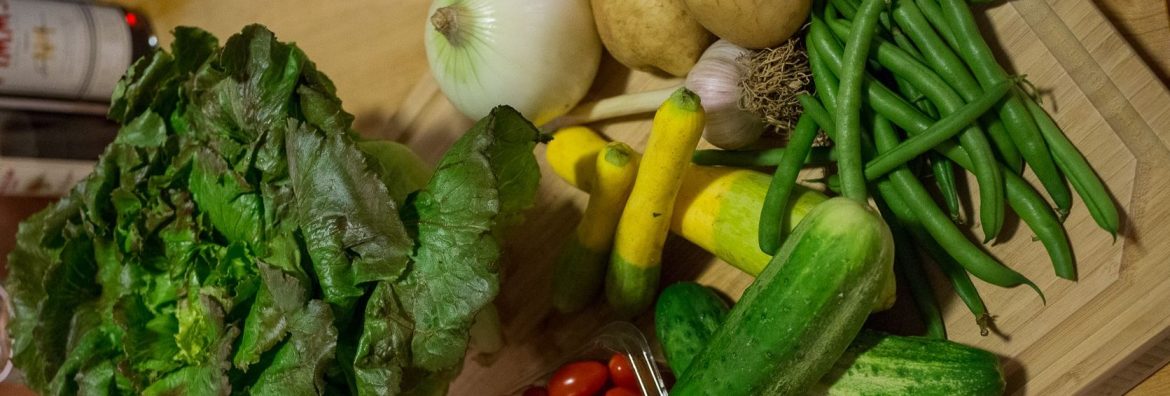I want to talk about garlic today, but first, a shout out to cucumbers. What a great year this has been for this versatile vegetable. What? Versatile? Yes. I admit I eat most of mine cut into sticks and sprinkled with a little sea salt, but I love cucumber sandwiches, cucumber salad and cucumber pickles. There are a bunch of recipes at https://grassfedcow.com/
But garlic.
I can remember in years past folks were unhappy with receiving heads and heads of garlic. It was hard for me to imagine since I use garlic most every day, but some people felt overwhelmed. Check out the info at https://grassfedcow.com/
What I love – and didn’t know anything about until I started writing the In Season column for the AJC – is that what we got in today’s box is hardneck garlic. I knew it had a hard stem, but didn’t know there was a name for it.
Garlic is generally divided into softneck and hardneck varieties. Softneck garlic keeps longer; it’s the type of garlic you see plaited into a braid and hanging on someone’s kitchen wall. And it’s what you usually find at the grocery store. No hard center stem, just a bunch of garlic cloves hanging onto each other.
That hard stem is what we eat earlier in the season as a garlic scape. Farmers cut those off so the plant will put its energy into the bulb instead of making a flower and putting out seed. What a lucky break for us – the “discard” from the plant becomes a delicious addition to our meals.
I once interviewed Mark Capps of Straight from the Backyard Garden. He grows both hardneck and softneck garlic but he believes the hardnecks are better tasting than the softnecks. “The cloves are larger and easier to peel. They’re less hot and really vary in flavor.” He talked to me about one he was growing, the purple-striped ‘Chesnok Red.’ I wonder if that’s the variety that was in our box today with its pretty purple stripes.
He also explained there’s a trade-off. “The better tasting the garlic, the shorter the storage period.” So the hardneck varieties don’t keep as long as your store-bought garlic. Time to eat up!
If all else fails and you’re feeling overwhelmed with garlic, make “40 Cloves and a Chicken” with this recipe adapted from Alton Brown. https://grassfedcow.com/
Not sure how many of you check out the New York Times for recipes but today’s e-blast listed this recipe for pasta with green beans and potatoes. Perfect for the contents of this week’s box. I had to share in case you missed it.
https://cooking.nytimes.com/
Pasta With Green Beans And Potatoes With Pesto
2 cups packed tender young basil leaves
1/4 cup pine nuts
1 teaspoon salt
2 plump garlic cloves, peeled and crushed with flat blade of a knife
1/2 cup extra-virgin olive oil, or more to taste
1/2 cup freshly grated Parmigiano Reggiano cheese, or more to taste
Salt to taste
1/2 pound small potatoes, peeled and sliced about 1/4-inch thick
1/4 pound tender young green beans, cut into 1-inch lengths
1 pound trenette, or other long, thin pasta
Make pesto: in bowl of food processor, add basil, pine nuts, salt and garlic. Pulse until mixture is coarse and grainy. With motor running, add oil in slow, steady stream. Add cheese; process just enough to mix well. If sauce is too dry, add a little more oil. Taste; add more cheese or salt, if desired.
Bring 6 quarts water to rolling boil. Add at least 2 tablespoons salt and the potato slices. Cook for about 5 minutes, or until potatoes have started to soften but are not cooked through. Add green beans, and continue boiling another 5 minutes.
Add pasta, and stir. Start testing pasta at 5 minutes. When it is done, and when potatoes and beans are tender, drain and turn pasta and vegetables immediately into preheated bowl. Add pesto, and mix thoroughly. Serve immediately.

